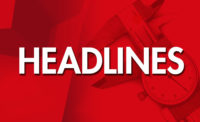One Voice has provided the following status of the three major congressional bills addressing this issue and an overview of select content of these bills.
Status of the Three Major Congressional Health Care Reform Bills
The House bill, titled “America’s Affordable Health Choices Act of 2009” (H.R. 3200), is referred to as the “House Tri-Comm Bill” because there are three House Committees drafting the bill. The last of the three committees passed their bill 31-28 on July 31. The full House is targeting September 15 for consideration of their version of the bill.
Blue Dog Democrats (54 fiscally conservative Democrats) are pushing back against an increase in costs and mandates. Conservative and freshmen democrats hold much of the cards, totaling more than 70 members out of 238 in the House Democratic Caucus.
In the Senate, two committees are drafting two separate bills. The Health, Education, Labor and Pensions (HELP) Committee has outlined its proposal and passed a bill from the committee. In the Finance Committee, three panel democrats and three panel republicans are negotiating the bill. After Finance Committee members reconcile their differences, they must then formulate one senate bill with the HELP Committee-there are many differences in the bill that must be worked out before mid-September.
Select Tentative Content of Bills(proposals have changed almost daily during the past two months and will continue to change during the coming weeks)
Employer and Individual Mandates
Paying for it All
Coverage
- - Ambulatory patient services
- Emergency services
- Hospitalization
- Maternity and newborn care
- Mental health and substance abuse services
- Prescription drugs
- Rehabilitative and laboratory services
- Preventive and wellness services
- Pediatric services, including oral and vision care
As Congress continues to craft health care reform legislation, it is important that manufacturers be heard. To send a message to your members of Congress through the NTMA/PMA One Voice Web site, click here.





